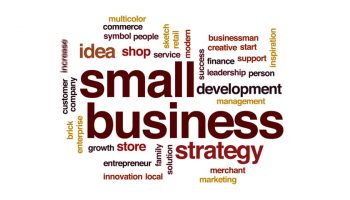Imagine your organization as a finely tuned machine, humming with activity and committed to delivering the best results possible. Now, envision this machine embarking on a process improvement journey, striving for perfection in every aspect of its operations. What guides this transformation? It’s not just the experts with coloured Six Sigma belts; it’s the fascinating interplay between Lean Six Sigma and Traditional Six Sigma.
Two giants take center stage in process improvement: Lean Six Sigma and Traditional Six Sigma. Each approach has its philosophy, set of tools, and strengths. However, understanding when and how to utilize them effectively can be the key to achieving excellence. So, let’s delve into the dynamics between methodology and Traditional methods and how they collaborate to shape the landscape of process improvement.
Lean Six Sigma: The Efficiency Champion
Lean methodology is often associated with Toyota’s legendary production system. Its primary focus is on removing waste, optimizing efficiency, and delivering value to customers.
Tools And The Techniques
Lean employs tools like Value Stream Mapping, 5S (Sort, Set in order, Shine, Standardize, and Sustain), Kaizen, and Kaban events. It embodies the art of accomplishing more with resources, a philosophy that resonates well with organizations of their costs.
Primary Goal
The goal of Lean is to streamline processes, making them leaner, meaner, and more efficient. It’s like a sculptor chiselling away the excess stone to reveal the masterpiece within.
Tools And Techniques
Lean employs tools such as Value Stream Mapping, 5S (Sort, Set in order, Shine, Standardize, Sustain), Kanban, and Kaizen events. These tools are all about improving processes and slashing wasteful practices.
Read Also: 5 Ways To Streamline Your Sales Process With A Lead Management System
Project Approach
Lean projects often go for quick wins and incremental improvements. They focus on continuous flow and the elimination of bottlenecks. It’s like improving a strategic, small series of victories over time.
Customer Focus
At the core of Lean is an unwavering commitment to understanding and delivering what the customer truly values. It’s about providing the right product or service at the right time and with minimal waste. In Lean, customer satisfaction reigns supreme.
Traditional Six Sigma: The Quality Crusader
Traditional Six Sigma, born at Motorola, has quality woven into its DNA. It’s like the watchmaker obsessed with precision, tirelessly seeking to reduce defects and process the variations to achieve near-perfect quality.
Primary Goal
Traditional Six Sigma’s main quest is to reduce variation in processes and defects. Imagine a factory where every product rolls off the line and meets strict quality standards.
Tools And Techniques
This approach relies heavily on statistical tools such as DMAIC (Define, Measure, Analyze, Improve, Control) and statistical process control (SPC).
Project Approach
Traditional Six Sigma projects can be data-intensive and often require a more extended duration. It’s the meticulous detective work of process improvement.
Customer Focus
Similar to Lean, Traditional Six Sigma is customer-centric. It seeks to ensure that processes consistently meet customer specifications and requirements. It’s about delivering excellence every time.
Lean Six Sigma: The Hybrid Solution
While Lean and Traditional Six Sigma have distinct identities and applications, they’re not always mutually exclusive. If you wish to master Six Sigma belts, recognizing their complementary nature and adopting a hybrid approach is the way to successful implementation.
Combining Forces
Lean Six Sigma leverages the strengths of both methodologies. Lean brings efficiency and waste reduction, while Traditional Six Sigma adds statistical rigour and defect reduction.
Synergy Benefits
This collaboration frequently leads to cost savings and increased customer satisfaction. It’s like having a team of superheroes where one member excels in speed while another excels in precision. Working together to save the day.
Tools And Methodologies
In Lean Six Sigma projects, teams have access to a toolkit encompassing both methodologies and Traditional Six Sigma tools. It’s akin to having a toolbox equipped with various instruments for enhancing processes.
The Right Approach Of Six Sigma Belts: Context Matters
Knowing when to apply Lean, Traditional Six Sigma, or Lean Six Sigma depends on the context and objectives of your organization. So, if you decide to be a master in Six Sigma belts, this is what you need to know about applying them:
When To Use Lean:
- Reducing lead times and cycle times is a priority.
- When processes are laden with various types of waste.
- Improving workflow and process flow is crucial.
- When seeking quick wins and incremental improvements.
When To Use Traditional Six Sigma:
- Achieving a high level of quality and reducing defects is the primary goal.
- When processes exhibit a high degree of variability.
- When in-depth root cause analysis and data-driven decision-making are necessary.
- When taking a meticulous, structured approach is viable.
When To Use Lean Six Sigma:
- When you seek to balance efficiency and quality.
- When the organization’s objectives demand both speed and accuracy.
- Waste reduction and defect reduction are equally crucial.
In this process improvement, Lean, Traditional Six Sigma, and Lean Six Sigma each offer a unique thread. The key is understanding which thread to weave and when. It’s about striking the perfect balance to achieve process excellence tailored to your organization’s needs.
So, whether you’re sculpting efficiency with Lean, crafting quality with Traditional Six Sigma, or combining the forces of both in Lean Six Sigma, remember that each approach has its place in the symphony of process improvement. It’s all about choosing the right notes to create the perfect melody of operational excellence.
Conclusion: Balancing The Scales Of Excellence
In the ever-evolving landscape of process improvement, Lean Six Sigma and Traditional Six Sigma are two distinct but harmonious notes in the symphony of excellence. While Lean focuses on efficiency and eliminating waste, Traditional Six Sigma is the guardian of quality and defect reduction. Together, they form the dynamic duo of Lean Six Sigma, offering organizations a holistic approach that marries speed and precision. Knowing when to apply each methodology, whether Lean, Traditional Six Sigma, or their combined might, is akin to mastering Six Sigma belts.
It’s about selecting the right notes at the right time to create a harmonious melody of operational excellence. With this understanding, you hold the conductor’s baton to lead your organization toward a symphony of success.
Read Also:





























